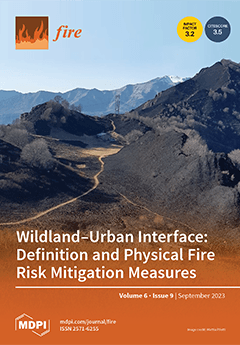This study estimates the radiative forcing by biomass burning and dust aerosols over the Indian subcontinent, with emphasis on the Indo-Gangetic Plains (IGP) during the period from January 2021 to April 2021, based on multiple satellite and reanalysis datasets. In this respect, we
[...] Read more.
This study estimates the radiative forcing by biomass burning and dust aerosols over the Indian subcontinent, with emphasis on the Indo-Gangetic Plains (IGP) during the period from January 2021 to April 2021, based on multiple satellite and reanalysis datasets. In this respect, we used retrievals from the Moderate Resolution Spectroradiometer (MODIS) and the Cloud-Aerosol Lidar and Infrared Pathfinder Satellite Observation (CALIPSO) system, as well as reanalysis data from the Goddard Earth Observing System, version 5 (GEOS-5), the Modern-Era Retrospective analysis for Research and Applications, version 2 (MERRA-2), the Copernicus Atmosphere Monitoring Service (CAMS), and ERA-Interim. According to the MERRA-2 and the CAMS, the highest black carbon (BC) concentrations in January 2021 were 7–8 µg m
−3, which were significantly lower than measurements performed in main cities along the IGP, such as Patiala, Delhi, and Kanpur. The meteorological data analysis accompanied by the CALIPSO lidar measurements showed that the vertical distribution of total attenuated backscatter (TAB) could reach altitudes of up to ~4–5 km and could be transported over the central Himalayan region. The spatial-averaged daily aerosol radiative forcing (ARF) values over the Indian subcontinent from January 2021 to April 2021 were found to range from −51.40 to −6.08 W m
−2 (mean of −22.02 ± 9.19 W m
−2), while on a monthly basis, the ARF values varied widely, from −146.24 to −1.63 W m
−2 (mean of −45.56 ± 22.85 W m
−2) over different parts of the study region. Furthermore, the spatial-averaged daily BC radiative forcing ranged from −2.23 to −0.35 (−1.01 ± 0.40 W m
−2), while it varied from −15.29 to −0.31 W m
−2 (−2.46 ± 2.32 W m
−2) over different regions of southern Asia, indicating a rather small contribution to the total aerosol radiative effect and a large presence of highly scattering aerosols. Our findings highlight the importance of growing biomass burning, in light of recent climate change and the rapid decline in air quality over North India and the Indian Ocean.
Full article





